Review| The Fate of the Furious
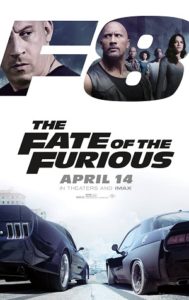 The Fast and the Furious films are very special to my wife and I. In fact, it was my wife who turned me on to them in the first place. I had never seen any of them until the release of Furious 7 two years ago. We both enjoy them and have since bonded over them more.
The Fast and the Furious films are very special to my wife and I. In fact, it was my wife who turned me on to them in the first place. I had never seen any of them until the release of Furious 7 two years ago. We both enjoy them and have since bonded over them more.
Part car chase movie, part soap opera, these movies deliver various levels of exhilaration, excitement and just plain fun. The characters really make these films watchable – their joshing and banter between them all is part of the charm. And after eight films, the characters have become even more endearing.
I understand that these films are not everyone’s cup of tea. I’ll be the first to admit that they can be really ridiculous, and have gotten progressively more so with each installment. However, if you keep that notion in the back of your mind the whole time, these movies are very fun.
So how does the franchise’s latest entry, The Fate of the Furious, stack up against the rest of the films? It’s somewhere in the middle. Director F. Gary Gray, a newcomer to the Fast and Furious films, maintains the energy and action for which the series is known. But this is one of the few films that made me tilt my head when it came to the story – partially based on what is known of the characters in previous films.
Thematically, there are some interesting nuggets to extract from Fate. The previous films have centered on family and loyalty, but this one has a little more to it – especially when it comes to the villain.
SPOILERS AHEAD!
Stuff I Liked
As noted above, it’s clear that F. Gary Gray “gets” the franchise, and brings an almost seamless continuation of the Justin Lin / James Wan style of directing from the previous films. The action is just as spectacular – starting with small set pieces (in comparison) and building up to an unbelievable climax. Fate has some of the best car action scenes in the whole franchise – be it a two-car race on the streets of Havana or having a nuclear submarine in hot pursuit of our heroes.
My favorite scene was not any of the car stuff, but a close-quarters prison riot featuring series regular Dwayne Johnson and returning Furious 7 villain Jason Statham. This scene was wonderfully chaotic and ridiculous, but shot in such a way to make it somewhat believable. With the music pumping, Johnson and Statham barreled their way through police and inmates, and it was so well executed. Each hit looked like it hurt. Statham flies through the air with admirable dexterity, the camera delivering a superb follow shot.
The aforementioned Johnson as Luke Hobbs is just great, as usual. Only Johnson, with his charisma turned up to eleven, could make a line like “I’m going to beat your ass like a Cherokee drum” sound cool, and funny – but in a good way. Johnson’s size also lends credence to Hobbs’ ability to lift concrete benches, and literally throw men into walls and doorways.
Tyrese Gibson’s Roman Pierce is also particularly enjoyable. He’s a joker through and through – even when he’s trying to be serious. When the rest of the crew was focused on saving the world at a Russian military base, Roman was focused on the one thing that apparently mattered to him: the size of his manhood in the cold. His funniest quality is his faux machismo masking some hilarious insecurity and cowardice. Roman yells when panic-stricken, even to the point where Hobbs mocked him for it.
Stuff I Didn’t Like
 Though most of the film’s action sequences were outstanding, there were a few, particularly some of the effects, that were just plain bad. The worst offender was the “zombie car” chase through New York City. It’s interesting (and kind of scary) in theory, but a lot of the shots looked unintentionally goofy. When the throngs of zombie cars round a corner, they look like the silly zombie hordes found in World War Z – running on top, over and under each other chasing after their quarry. It looked very cartoony.
Though most of the film’s action sequences were outstanding, there were a few, particularly some of the effects, that were just plain bad. The worst offender was the “zombie car” chase through New York City. It’s interesting (and kind of scary) in theory, but a lot of the shots looked unintentionally goofy. When the throngs of zombie cars round a corner, they look like the silly zombie hordes found in World War Z – running on top, over and under each other chasing after their quarry. It looked very cartoony.
What bothered me most about The Fate of the Furious was its lazy story. I know that’s not the first thing most people think of when they watch these films, but the Fast and Furious franchise has a pretty solid core when it comes to its characterization. This film showed some cracks in that foundation – partially because of events established in the previous installments, particularly Furious 7.
The spirit of Brian O’Conner, played by the late Paul Walker, hangs over this movie, and not in a good way. The character was treated, more or less, like he’s dead, even though story-wise he isn’t. Dom even names his newly-discovered child after Brian in an obvious memorial/homage to Walker.
Furthermore, even if Brian wasn’t part of “the life” anymore, based on the loyalty the two friends had racked up over the years, it’s highly unlikely he would have let the crew go after Dom without him. And that doesn’t even cover the fact that Cipher had an obvious target she could have exploited to get Dom to cooperate (not only Brian, but Mia and little Jack as well).
The filmmakers and screenwriter Chris Morgan should have just let Brian die in Furious 7. It would have been more of an emotional blow to the team. That last sequence in Furious 7, with Brian taking the off ramp into the sunset, could have been entirely in Dom’s mind – a nice bit of poetic closure that would have made more sense in that context. And Dom’s naming of his child in Fate would have had more emotional resonance.
Stuff to Ponder
What was thematically intriguing about The Fate of the Furious were the motives of the villain Cipher, played by Charlize Theron. In Fate, it was revealed that Cipher was the puppet master through which all the villains from the previous four films operated – a human hacker version of Marvel’s Thanos.
Cipher was a remote villain, literally. All of her deeds were done via an uplink from a tech-outfitted airplane. Through her tech, she seemed to know all and see all (except Dom under the hood of his car, of course). It’s almost as if she was a god of sorts, and her master plan was to dole out some well-deserved punishment to the world and threaten nuclear annihilation if people weren’t kept in line.
Theron’s villain represented the height of human arrogance – a human “god” who is unmerciful and unloving. Our human standard of justice falls so short of the infinite knowledge and wisdom of the true God. Cipher’s arrogance blinded her to the resilience of Dom and his crew, and she eventually lost the control she worked to maintain.
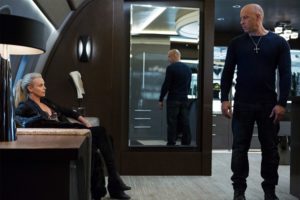 In fact, Cipher is more in line with Lucifer and his ability to exploit spiritual weaknesses. Cipher literally whispered lies into Dom’s ear, telling him that he was nothing more than a criminal and would never be the good guy he wanted to be. She tempted him with living a life where Dom would be in the “zone” between start and finish forever. Cipher also used Dom’s love for his family against him. Sounds all too familiar.
In fact, Cipher is more in line with Lucifer and his ability to exploit spiritual weaknesses. Cipher literally whispered lies into Dom’s ear, telling him that he was nothing more than a criminal and would never be the good guy he wanted to be. She tempted him with living a life where Dom would be in the “zone” between start and finish forever. Cipher also used Dom’s love for his family against him. Sounds all too familiar.
For all of her supposed power, and scoffing at Dom’s understanding of family, Cipher underestimated the power of love and forgiveness. In fact, several of the people who participated in her downfall were recipients of forgiveness from Dom and his family. Raldo, the street racer in Havana for example, was shown mercy when he lost the race to Dom (despite trying to cheat) by not having his car taken away. Raldo’s respect and gratitude spurred him to help Dom.
“Like the rest, we were deserving of wrath. But because of His great love for us, God, who is rich in mercy, made us alive with Christ even when we were dead in transgressions – it is by grace you have been saved.” Ephesians 2:3-5
Real power, the power of God, is not in subjugation of others, but in mercy, grace and love. It is why the God of the universe is who He is. It is why He bore our sins on the cross and paid a price we could never repay.
So What I’m Trying to Say is
If you already like the Fast and Furious franchise, The Fate and the Furious delivers another great entry. Despite some glaring story issues, it’s still a fun ride with lots of amazing stunts, funny one-liners and a great ensemble cast.
Human beings have a limited grasp on justice in the world – often fueled by revenge or an overwhelming arrogance, as personified by Fate‘s villain, Cipher. Though she had god-like powers (augmented by technology), she is unable to understand that true power is in love. God Almighty had the ability and right to punish us for our sins against Him, yet He chose to show us grace and mercy – so that we could be a part of His family.


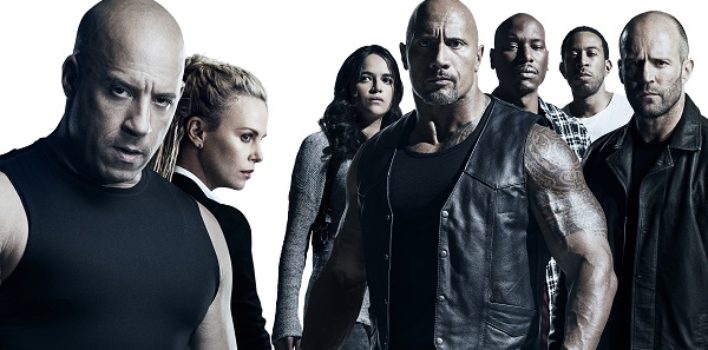
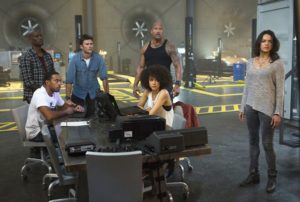

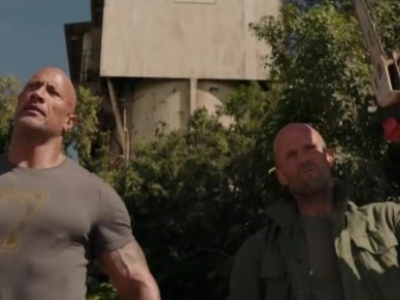
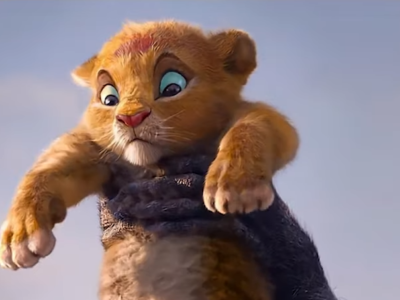
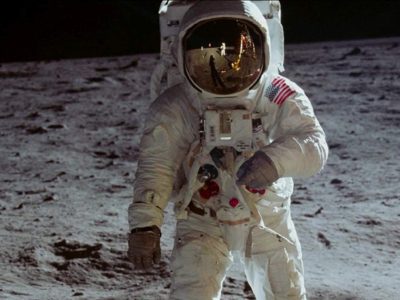


Pingback: #132 – The Fate of the Furious and Bro Bliss | Reel World Theology